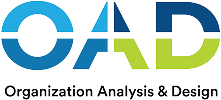High employee turnover isn’t just a financial burden—it’s a signal that something deeper is broken. Picture a Monday morning where half the sales team is new faces and veteran employees whisper, ‘Who’s next?’ That’s not just turnover—it’s instability made visible. When top performers leave, they take institutional knowledge, momentum, and morale with them. Understanding why turnover happens is the first step toward building a stable, engaged, and high-performing workforce. Understanding why people leave is only half the battle—identifying why they stay is what separates reactive HR from strategic leadership.
Table of Contents
- Understanding the Reduction of Turnover in Employees
- Diagnosing the Problem
- Building a Retention Strategy That Works
- Measuring, Iterating, and Sustaining
- From Turnover Control to Talent Stability
Understanding the Reduction of Turnover in Employees
The Psychology and Economics of Turnover
Employee turnover is more than a metric—it’s a mirror of organizational health. At OAD, we see this pattern across industries—companies focus on hiring faster, but overlook the behavioral mismatches that silently drive people away. It’s like a sports team drafting the fastest runners but ignoring how they pass. Skill without chemistry rarely wins championships. People rarely leave because of a single reason; they leave because small frustrations compound over time. When expectations, management style, or workplace culture fail to align with employees’ motivations, disengagement begins long before resignation.
Behind every departure lies a financial ripple. Between lost productivity, rehiring expenses, onboarding costs, and agency fees charged by external recruiters, replacing an employee can easily reach twice their annual salary. For HR leaders, understanding this psychological and economic equation is essential to designing smarter retention strategies. These turnover costs include both direct expenses, like recruitment and training, and indirect costs, such as lost knowledge and decreased team morale.
According to Gallup, U.S. businesses lose over $1 trillion annually to voluntary turnover. Yet, OAD’s data shows the real cost often comes from the lost team cohesion that no spreadsheet captures.

The Hidden Costs Most Leaders Underestimate
The visible costs of turnover—recruitment fees and onboarding time—are only the surface. The hidden damage often runs deeper: disrupted team dynamics, declining morale, and the erosion of institutional knowledge. When experienced employees leave, remaining staff absorb the pressure, often leading to burnout or further exits. High turnover rates can significantly impact remaining employees by lowering their morale, increasing their workloads, and diminishing overall engagement. According to SHRM, 52% of employees say increased workload after a colleague’s departure is their top burnout trigger.
Organizations that fail to recognize these indirect costs end up in a loop of constant hiring and declining performance. Addressing turnover isn’t about filling vacancies faster—it’s about stopping the leak at its source. One regional bank we studied hired aggressively for two years—only to realize they were training replacements for replacements.

Diagnosing the Problem
Reading Your Turnover Rate Like a Doctor Reads a Chart
Turnover rates tell a story—if you know how to read them. A sudden spike might reveal toxic leadership; a gradual rise could point to cultural drift or stalled career progression. The metric itself is simple: divide the number of employees who left by the average number employed over a set period. The meaning behind it, however, is far more complex. As Jeff Bezos once said, ‘Your brand is what people say about you when you’re not in the room.’ The same goes for leadership—turnover often says what surveys won’t.
When tracked properly, your turnover rate acts like an early warning system. It shows where engagement is fading, where managers are struggling, and where structural issues quietly sabotage retention long before exit interviews confirm it.

The Usual Suspects: Culture, Leadership, and Misaligned Expectations
Most turnover problems start long before the resignation email. A culture that rewards overwork, ignores recognition, or offers no clear career path breeds quiet disengagement. Employees who don’t feel valued stop investing emotionally long before they physically leave. At OAD, we often see the warning signs months in advance—frustration in communication patterns, role misalignment, or behavioral fatigue that quietly drains motivation. Ineffective leadership, characterized by unclear guidance and inadequate support, can further drive employees away and undermine team stability.
Poor leadership amplifies that effect. Managers who fail to provide feedback or clarity create uncertainty—one of the fastest routes to burnout. Employee morale suffers in these environments, but effective management practices and recognition can significantly boost morale and engagement. On the other hand, organizations that nurture transparent communication, fair compensation, and visible growth paths see loyalty rise naturally. An engaged workforce is more likely to remain committed, increasing both retention and overall organizational performance.

Building a Retention Strategy That Works
Compensation That Competes Without Breaking the Budget
Competitive pay doesn’t mean overpaying—it means paying fairly and clearly. When employees understand how compensation aligns with performance and market benchmarks, trust increases. Regularly reviewing salaries, benefits, and retirement plans prevents silent resentment from festering. Compensation and benefits play a crucial role in employee retention—offering competitive pay and comprehensive benefits packages directly contributes to employee satisfaction, loyalty, and reduced turnover.
Smart compensation strategies tie pay to value, not volume. The goal isn’t to keep people because they’re afraid to leave—it’s to keep them because they feel valued where they are. As McKinsey research shows, transparency in pay and performance drives 20% higher engagement—but only when employees see the logic, not just the numbers.

Career Development: The Ultimate Retention Engine
Nothing pushes talent out faster than stagnation. Employees who see no future will create one elsewhere. Offering career growth opportunities, mentorship programs, and professional development pathways helps individuals connect their ambitions to the company’s trajectory. Providing clear career development opportunities is also essential for talent retention, as top performers are more likely to stay when they see a path for advancement and recognition. Think of a high-performing analyst who’s stopped volunteering ideas in meetings. That’s career stagnation in real time.
Leaders who invest in development signal that retention isn’t a cost—it’s a strategy for business continuity. A culture of growth breeds loyalty, engagement, and long-term performance.

Work-Life Balance and Well-Being as Strategic Imperatives
Burnout doesn’t announce itself—it accumulates. Encouraging a healthy work-life balance through flexibility, mental health support, and wellness programs prevents disengagement before it begins. Top athletes don’t train nonstop—they build recovery into performance. The same logic applies to knowledge work: recovery time is performance time.
Organizations that treat well-being as a business metric, not a perk, consistently outperform those that don’t. A balanced employee is a productive employee, and productivity sustains retention far better than perks or slogans ever will. Even Elon Musk admitted that burnout among Tesla engineers nearly derailed production. High performance without recovery isn’t sustainable leadership.

Recognition, Engagement, and Belonging
Recognition isn’t about plaques and gift cards—it’s about acknowledgment that feels genuine. Peer-to-peer recognition programs, public appreciation, and continuous feedback remind employees that their effort matters. Employee recognition, when done well, delivers psychological benefits by boosting morale, fostering a sense of belonging, and reinforcing positive behaviors.
Engagement thrives when people feel seen. When recognition becomes part of the culture, employees don’t just stay longer—they contribute more while they’re there. Employee recognition and engagement are key strategies for retaining talent and reducing turnover.

Leadership and Management Practices That Retain Talent
Managers are the single greatest variable in retention. A good leader can turn a disengaged employee around; a bad one can undo months of HR strategy in a week. Training managers to listen, coach, and communicate expectations clearly is non-negotiable. OAD data repeatedly confirms this—managerial behavior alignment predicts team retention better than compensation or perks combined.
Strong leadership doesn’t just prevent turnover—it creates psychological safety and trust. When employees feel heard and supported, loyalty follows naturally. Effective leadership practices can also significantly reduce turnover by proactively addressing workplace issues and fostering a positive environment.

Onboarding and Continuous Training
First impressions last. A structured onboarding process builds early confidence and connection, while ongoing training programs keep employees aligned with evolving company goals. The hiring process—including recruiting, screening, interviewing, onboarding, and integrating new employees—is critical for setting up new team members for success and managing organizational resources effectively. Clearly defining job responsibilities during onboarding ensures that employees understand their roles and duties from the start, which supports retention and performance.
Organizations that treat onboarding as a relationship rather than a checklist dramatically reduce early-stage attrition. Effective onboarding has a significant impact on new hires, improving their satisfaction and increasing the likelihood of long-term retention. Training isn’t a one-time event—it’s a long-term investment in competence and commitment.

Best Practices for Reducing Turnover
Organizations rise or fall on one fundamental truth: people power performance. Employee turnover doesn’t just drain budgets — it bleeds institutional knowledge, disrupts team chemistry, and fractures the very foundation of sustainable success. The companies that thrive understand this reality: retention isn’t just HR strategy, it’s business survival engineered through intentional action.
Building a workforce that stays isn’t accidental. It’s crafted through deliberate choices that honor talent, nurture growth, and create environments where people don’t just work — they flourish. Here’s how forward-thinking leaders transform turnover from inevitable loss into competitive advantage:
- Competitive Salaries and Benefits: Money talks, but it doesn’t just whisper — it declares value. Top talent flows toward organizations that back appreciation with action. Smart leaders benchmark relentlessly, adjust boldly, and ensure compensation packages speak louder than competitors. When people feel financially valued, they invest emotionally.
- Career Growth Opportunities: Stagnation kills ambition faster than any external opportunity. Exceptional organizations build ladders, not dead ends. They create clear pathways upward, sideways, and forward. Mentorship becomes currency. Training transforms potential into performance. When employees see tomorrow’s possibilities, they commit to today’s challenges.
- Healthy Work-Life Balance: Burnout doesn’t knock — it crashes through the door, taking talent with it. Wise leaders architect flexibility into culture itself. Remote options become reality. Mental health support becomes standard. Well-being isn’t a perk — it’s the foundation that makes everything else possible.
- Positive Workplace Culture: Culture eats strategy for breakfast, but it also digests turnover for dinner. Recognition flows freely. Communication opens doors. Team-building creates bonds that transcend job descriptions. In these environments, people don’t just show up — they show out.
- Effective Management Practices: Leaders don’t just direct — they connect. Human-centered management transforms bosses into builders of people. Communication becomes conversation. Empathy drives accountability. Trust grows stronger than any org chart, creating the kind of leadership that people follow willingly.
- Employee Feedback and Surveys: Listening isn’t passive — it’s strategic intelligence gathering. Smart organizations create multiple channels for voices to be heard, concerns to surface, and solutions to emerge. When feedback flows upward and action flows downward, engagement soars.
- Onboarding Processes: First impressions forge lasting commitments. Comprehensive onboarding doesn’t just introduce — it integrates. New hires feel welcomed, supported, and equipped from day one. Strong starts create strong stays.
- Retention Strategies: Prevention beats cure every time. Stay interviews reveal what exit interviews can’t: the real-time pulse of engagement. Proactive leaders address concerns before they become resignations, saving both talent and treasure.
- Wellness Programs: Well-being isn’t optional — it’s operational excellence. Mental health support, fitness resources, and assistance programs signal that people matter beyond productivity. When organizations invest in whole humans, whole humans invest back.
- Performance Management: Fairness fuels performance, transparency builds trust. Regular reviews become growth conversations. Constructive feedback becomes competitive advantage. When people feel seen for their contributions, they contribute more of themselves.
These practices don’t just reduce turnover — they revolutionize how organizations operate. But remember: retention isn’t a destination, it’s a journey. Sustainable success demands continuous commitment, genuine care, and the understanding that in the war for talent, the organizations that win are those that make their people want to stay.
Because when you create environments where people thrive, turnover transforms from problem into possibility — and your workforce becomes your most powerful competitive advantage.
Measuring, Iterating, and Sustaining
Evaluating What Works — and What Doesn’t
Employee retention isn’t a “set it and forget it” exercise. Even the most carefully designed programs lose impact if they aren’t measured. Tracking turnover rates, engagement scores, and employee satisfaction data allows HR leaders to pinpoint which initiatives drive real change—and which are just expensive window dressing.
Regular employee surveys and structured feedback loops turn anecdotal opinions into actionable data. When metrics align with company values and are reviewed consistently, retention becomes a predictable outcome, not a lucky accident.

Using Data to Predict and Prevent Turnover
The best organizations don’t react to turnover—they anticipate it. Predictive analytics can reveal early warning signs of disengagement long before an employee updates their résumé. Tools like OAD’s behavioral assessments allow leaders to spot mismatches between role demands and individual strengths, enabling proactive support rather than post-exit regret.
By combining quantitative insights with qualitative feedback, HR teams can create a living strategy—one that evolves with workforce dynamics and economic realities. The result? A significant reduction in turnover and a more stable, motivated workforce. Reduced turnover is a measurable outcome of these targeted interventions, demonstrating the impact of proactive strategies and predictive analytics on retention rates.
OAD’s validated behavioral assessments translate psychological patterns into data leaders can act on—bridging human insight with predictive accuracy.

From Turnover Control to Talent Stability
Reducing turnover isn’t about fixing people—it’s about fixing systems. Sustainable retention grows from alignment: the right roles, fair pay, clear growth paths, and leaders who actually listen. When those foundations are in place, engagement becomes self-reinforcing and culture stops leaking talent.
Turnover isn’t a people problem—it’s a design flaw. Environments drive behavior, and misaligned systems quietly push talent out the door.
Companies that rely on guesswork will keep bleeding experience and morale. Those that use behavioral data to anticipate risk and invest in growth build what every organization claims to want but few achieve—a stable, motivated, high-performing workforce. These efforts are essential for company long-term stability and success, ensuring that employee retention and organizational strength are sustained over time.
Test OAD for free and see how data-driven insights can help your organization retain top talent and strengthen its culture from the inside out.

